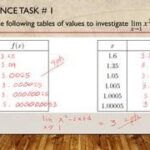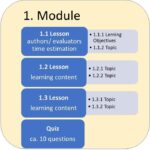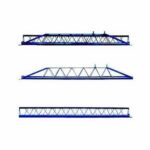The head, by its movements and gestures, can impart meaning to the character’s intentions and/or feelings. Like the gestures of the arms and hands, it too has a non-verbal language, while sometimes ambiguous and subtler. Understanding the potential of these gestures and their implications is a valuable tool for actors, especially in film acting where the head and face dominate the screen image.
Head gestures allow people to communicate a variety of thoughts and feelings. However, head movements by themselves are incapable of being as precise as words. They are open to wide interpretations and many have multiple meanings. In many cases, the gesture’s implications depend on the context of the scene, the dialogue, relationships, and the dramatic situation. As such, head gestures often embellish or accent what is being communicated by other dramatic choices.
The head’s motions are numerous and include swivel, tilt, slant, or any combination thereof. They are also performed with varying qualities from accentuated to repressed, from fluid to frantic, from minimal to exaggerated. Another reason is their relationship to other acting entities such as dialogue, facial expressions and body movements. Do they precede, follow, or synchronize with these entities? Do they support or contradict the other entities portrayed? By exploring these aspects using various examples, you will better understand both the limits and potentials of head gestures.
Let’s look at the most common gestures first. The nod of the head, tilting alternating up and down indicates agreement, acceptance, or acknowledgement. It could also mean, “Yes.” The headshake, turning the head from side to side, is often used to mean “no.” It is the most common form of expressing a negative reaction or indicating disagreement. These meanings, the nod and head shake, are accepted in much of the western world, however in some countries, other meanings prevail. For instance, in South Asian cultures, most notably India the side-to-side tilting of the head in arcs may mean “Yes’, “Good”, “OK” or “I understand” depending on the context.
The head toss could mean several things such as, “Get out of here”, “It’s over there”, “Come over here,” or “Shut up, the boss just came in.” This gesture occurs mostly within group settings where a cryptic message must be conveyed. Thus, the head toss is usually subversive in nature, directed at one person and indicates a call to action. As such, eye contact with the recipient is required to complete the transaction.
The head roll has a number of interpretations such as, “I have no idea,” “What could that be,” or “Why are you asking me?” The gesture is also associated with avoidance of an issue with the roll directed away from the confronting person or entity. The eyes play a role in this interpretation, looking to areas devoid of people and their sight lines.
The cut-off is closely related to the head roll in that it indicates uncertainty or separation. This gesture consists of the head turning away from the confronting person and avoiding direct eye contact. The gaze may reflect an uncertainly or disagreement with eyes searching for answers and/or subtly commenting on the confronting person. The cut-off opens the door for unencumbered internalizations. No one is observing. In essence, a blocking move that allows another perspective of the character either portraying a truth or displaying deception.
Head up tilt may indicate contempt, a judgmental pose or “I’m better than you” stance. The accompanying facial expression can further define this gesture with flared nostrils for contempt, squinting eyes for judgmental pose, and teetering head jiggle with slight smile for superiority. The eyes clarify the target and the intensity can be varied to maintain interest. The gesture needs to be held long enough for appropriate impact. However, when held too long, the behavior becomes forced diminishing the integrity of the scene.
Side slant with the head leaning to one side can indicate interest, compassion, and even skepticism. When combined with searching eyes, interest becomes more evident. A downward tilt implies compassion when accompanied by sympathetic facial expressions. Skepticism becomes evident with side slant accompanied by a slight upward tilt and questioning eyes.
The Head Swivel has numerous applications. It can indicate what the character is talking or thinking about by the direction and target of the head turn. The “what” in these cases could be something tangible such as people or objects. They could also be imagined entities and the head turn combined with eye behavior takes us to that space. We see and feel what the character is visualizing. The head swivel is also used scanning and observing a new environment. Another application, when two people conversing are side by side, the head swivel is used to acknowledge or comment on what is being said. When these subtle moves are incorporated with eye behavior, the exchange can be quite effective. This is because both behaviors are open to the audience and ideas, thoughts, and reflections become more important than the physical relationship.
The head swivel is also used in look aways, detaching from person you are talking to and turning to an internalization area. These areas include focal zones such as comfort area, problem area, recall, and avoidance areas. These areas combine head turns with eye behavior and help delineate areas of concern clarifying inner thoughts and feelings.
Around Corner. When something obstructs the character’s view, the head moves to obtain a better angle. This movement incorporates the upper body moving sideways or up to get a better look. Such movement indicates a stronger commitment of interest than the side slant and increases the impact. This move can be done with only the upper body moving sideways or in combination with the head slant. The first is in the comic style while the latter is more realistic.
Emphatic Head Gestures can be used to evoke powerful feelings of convictions. Such movement, usually up and down, punctuates and emphasizes dialogue. Often these are synchronized with the rhythm and phasing of the words. However, when overused, the affect become redundant and looses impact. Yet, when properly placed and implemented, this gesture can be powerful tool in scenes having highly motivated speeches or confrontational arguments
Leaning in is indicative of being attentive, interested, or desirous. This head movement is usually very subtle and almost imperceptible, yet it has a telling affect on relationships. It signifies the person is actually listening. It implies a connection, either intellectual or emotional. When accompanied by appropriate facial expressions and eye behavior the viewer senses what’s being communicated non-verbally. For instance, if the guy leans in focusing longingly on her lips, it likely relates the emotion of desire.
Leaning back is indicative of being disinterested, cautious, or skeptical. This movement is usually reactionary and thus more perceptible. Something has come to change the demeanor of the character such as a boring subject, a precarious situation, or a worrisome proposition. The movement is one of survival and it implies a judgmental wait-and-see attitude. When abrupt, it might signify a scary or shocking event and set up flight or fight situation.
The Head Shrug has several meanings. It could imply that, “I don’t know”, “I don’t care”, “So what,” or “Whatever”. This movement raises the shoulders to shorten the neck. It can also incorporate a slanted head giving it a more congenial dimension. This gesture is sometimes used in combination with dialogue and implementing it before the dialogue is the most straightforward approach. This approach follows the feel-think-act-speak sequence. It is considered the most sincere. When implemented during the dialogue, the total effect is weaker. When inserted after the dialogue, the gesture could imply a reaction, intimidation or insincerity. It could also be an afterthought.
The Head Dip is a state of being associated with being tired, experiencing grief, or contemplating an idea or problem. Lowering the head allows the character to enter an area of comfort without distractions from others. As with all gestures, the juxtaposition with scene context, dialogue and facial expressions affect how one perceives the non-verbal entity.
The Crumble is a reactionary head movement, one that is often found in highly dramatic moments. The gesture combines the lean in with a subtle up and down quiver of the head as it moves forward. It’s a gesture of expectation, relief, and sometimes grief. I call it the crumble as the character is almost falling apart as it dribbles forward and its vulnerability is most evident. This gesture is an internalization of both emotions and thoughts and as such, the target is what the character visualizes or imagines.
Eye/Nose Alignment is another aspect of head gestures. In conveying emotions such as suspicion and jealousy, the eyes move more acutely then do head movements. On the other hand, with emotions such as curiosity and desire, the eye/nose angle is more aligned. Likewise, in fearful situations, the eyes lead head movements and tend to be more acute. An acute eye/nose angle can also be used to show disdain or non-confrontational anger.
Stillness is another choice in head gestures. Minimal movements imply great many things. It allows the eyes and facial expression to take center stage and do their thing. It also heightens tension and a feeling of vulnerability. By being motionless the viewer is allowed to enter the character’s head and question what’s going on inside. It also provides room for audience collaboration to speculate what’s going to happen next.
Of the Flaws found in using head gestures, the most common is overuse. As with other gestures, when used repeatedly the affect wears off and the impact is lost. Instead, select key story moments where gestures will help support the character’s emotions or intentions. In addition, rather than duplicating the dialogue content, seek out hidden facets that show the true essence of the scene. Find what’s really going on, then use gestures to reveal them.
Another flaw is being too implicit, too on the nose. Here the gestures stand apart from the performance as highly noticeable elements impeding the integrity of the scene. Sometimes this fault has to do with not portraying the acting style correctly. For instance, in comic styles, the behavior is more exaggerated, precise and readable. In drama, the behavior is more credible, with implied meanings, and portrayed balancing the internal and external forces.
Being too mechanical is another common flaw, especially among beginners. Often this flaw can be corrected by practicing head gestures with varying intensities and speeds. Being able to control the qualities, timing, and dynamics should be a major part of your training as it allows for portrayals that are more authentic.
The dancing head flaw occurs where the head gyrates and this movement is not applicable to the character’s behavior. This is usually an innate behavior of the actor and one of which he or she is not aware. This dancing head becomes apparent when the actor is required to rehearse with a book on one’s head.
Other attributes. The head can also exhibit attitudes, opinions, and social status. For instance, an amicable attitude is going to more open and accommodating. A person with conservative opinions might be more uppity as apposed to the congenial stance of a liberal. Social status is likewise reflected in the lowered head of a suppressed sharecropper as apposed to a confident head-high pose of a company president.
The Size of Movement is another factor and dependent on size of head in frame. When the head is relatively small as in a long shot, the movements have to be larger to have visual impact. In a close up, the movements should be subtle, as they will appear larger and faster. On a theatre stage, the same rational applies and gestures have to be readable to the back seats.
Contradictions between head gestures and other acting choices are most infrequent. Normally gestures represent the truth while the dialogue, facial expressions, and blocking can represent a lie. Unscrupulous characters and con artists are sometimes betrayed by their truthful gestures while portraying a façade in other areas. This unsettling dissonance creates a deeper characterization that pulls the audience into the story. Conversely, a call girl might employ deceptive gestures to extract money from a client. These contradictions add color to the characters and make them more intriguing.
With movements and gestures, it’s best to do less and make those actions stand out and be clearly readable. In addition, they should be in line with the story and consistent with the character and his or her relationships.
Writing about nonverbal entities and their implications is difficult in a literary format. Gestures are not word descriptions, they are movements expressing an idea or conveying a feeling. In visualizing these gestures, see them in motion with a beginning, middle, and end. In this way, you are more likely to express them in a fluid believable manner. Like all elements of acting, the goal should be to portray gestures in an organic and authentic way. This can be done through focused training and considerable practice to where they are generated instinctively as an integral part of the character’s behavior.
As mentioned earlier, head gestures have multiple meanings and are shaped by the surrounding dramatics. This article explores some of these meanings; however, it cannot cover the many combinations available. One should pursue these possibilities and explore this subject on your own. People watching and studying award-winning performances are the best ways to assimilate the techniques outlined here. In your research, note the effective use of movements and gestures, and how using only what complements the dialogue and the telling of the story results in believable performances.






![Erratum for “An inverse theorem for the Gowers U^s+1[N]-norm”](https://azmath.info/wp-content/uploads/2024/07/2211-erratum-for-an-inverse-theorem-for-the-gowers-us1n-norm-150x150.jpg)

